If you write or teach poetry than you are most likely a logophile, a lover of words. I love to read. I love to write, and therefore I love words. In poetry, like any type of writing, words are important. They seem to hold special weight in poetry since words are sparser than in prose, and ideally more thoughtfully chosen.
When I started teaching poetry to my students, I wanted to spend a couple of days celebrating words, and thinking about word choice. How do we choose our words? What are our favorite words? What words have stronger impact than others? I read a few lesson ideas about students composing favorite word lists to get them thinking in-depth about their word choices, and decided I needed to give it a shot in my class.
I excitedly set about trying to write my favorite word list. I thought I’d try ten words. For me this was a difficult task. It turned out, I loved lots of words, and for lots of different reasons. Some words are fun to say like: flibbertigibbet, splat, gooey, pitter-patter. These words have a sound to them that rolls off the tongue, and just sound amazing. Students are naturally drawn to onomatopoeia words, sound words like: boom, kerploosh, buzz, for the same reason.
Other words have special meaning. If you love reading, as I do, then words like: books, library, story, and poem evoke a fond association with the word. For many of my students the love of an activity creates a love of certain words like: soccer, ballet, video games, or football.
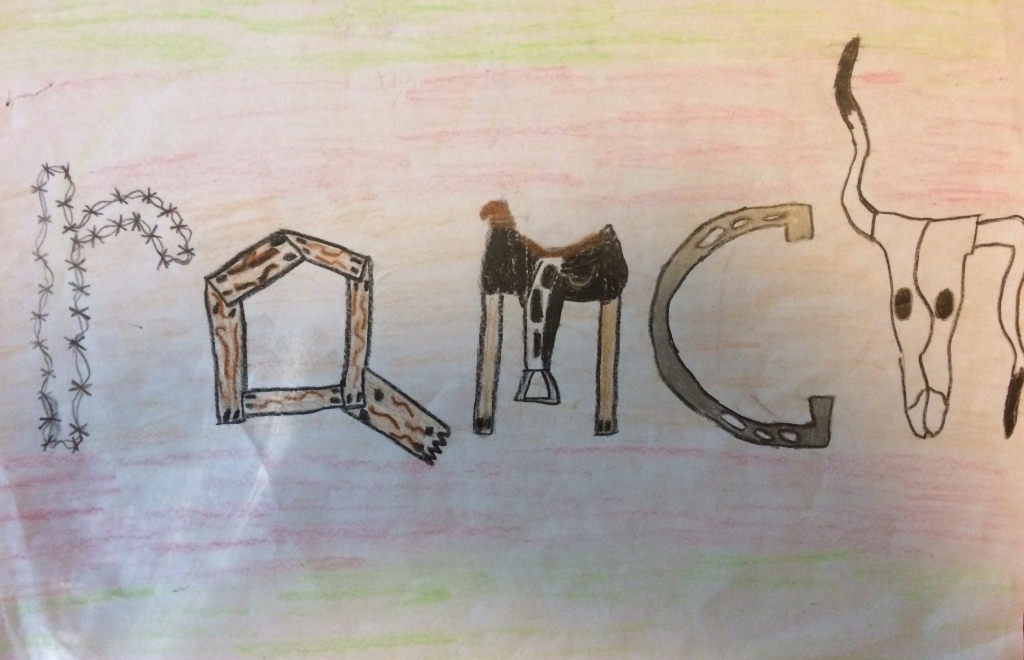
This student spent a lot of time working on his parents ranch and participating in rodeo events.
There are words that we love because they are beautiful in sound and image: intricate, gossamer, melancholy, murmur, oceanic and firefly are some of my favorite. There are also words that are delightful because of their ugliness: fester, gnarled, pus, booger, maggot.
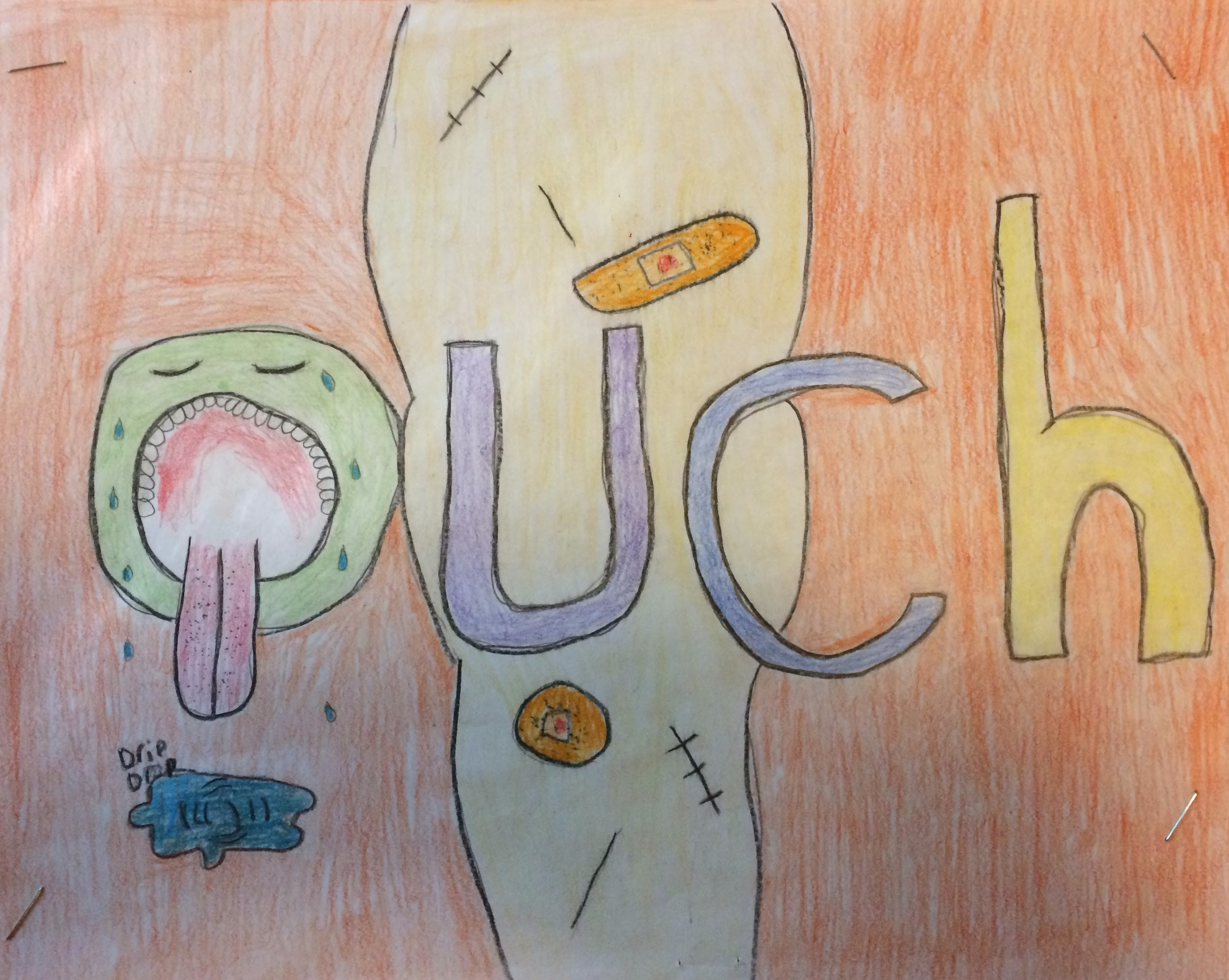
Food words bring to mind so many of our senses, taste, smell, sight, texture (feeling),even sounds are activated. When I think of the word bacon, the word sizzle also automatically comes to mind. Food words also incorporate many amazing foreign words into our vocabulary: fettucine, sushi, enchiladas, cous cous, tahini, and more. Plus, students love trying to make everyone else in the room hungry, especially before lunch.
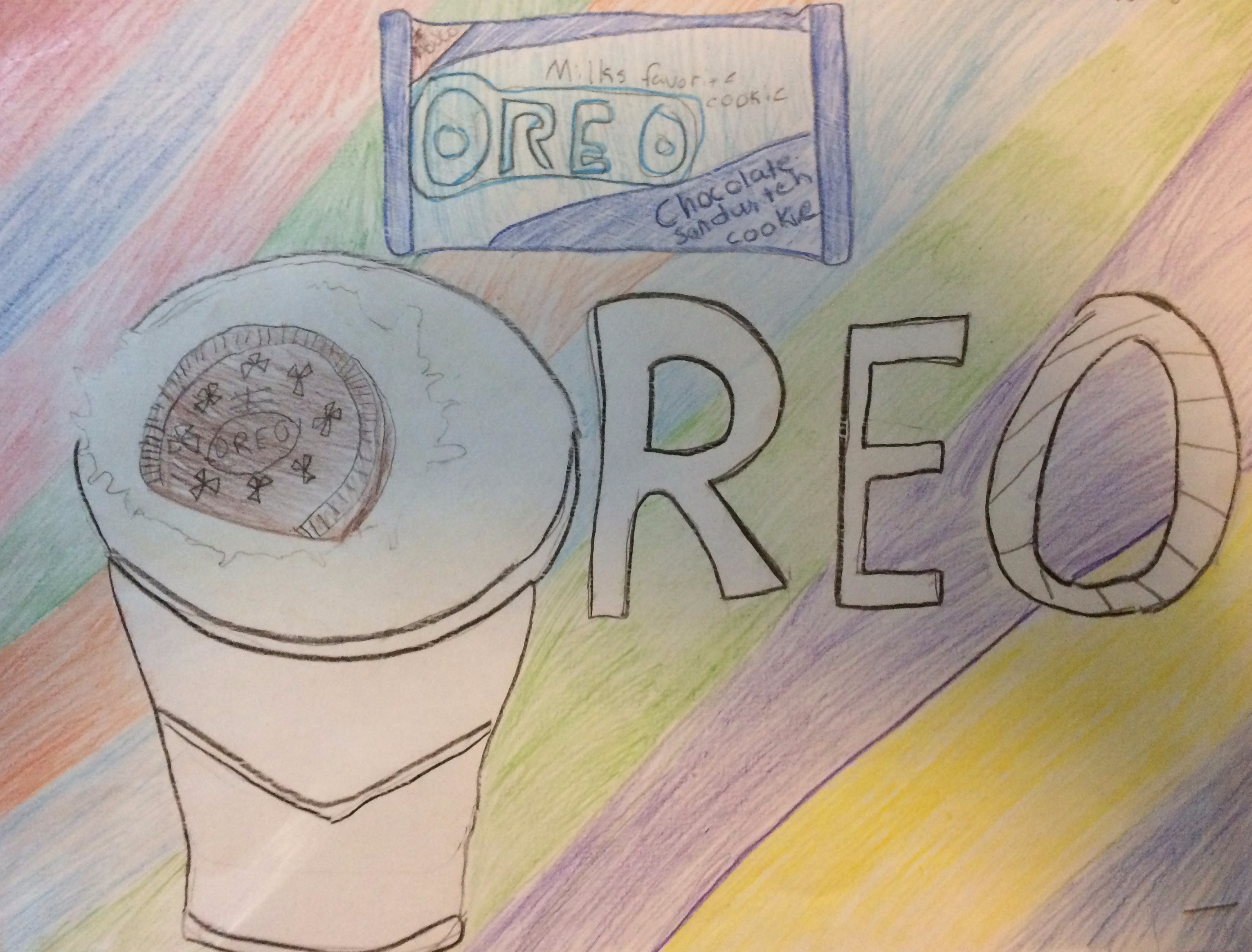
Fun food words.
Place words often show up on favorite word lists. A vacation to Hawaii or Florida brings up wonderful memories. The student who has recently moved may want to honor their birth state, or the friends and family whom they are missing. Places that are on my bucket list also frequent my word lists: Tahiti, Mt. Kilimanjaro, Trondheim, Alaska.
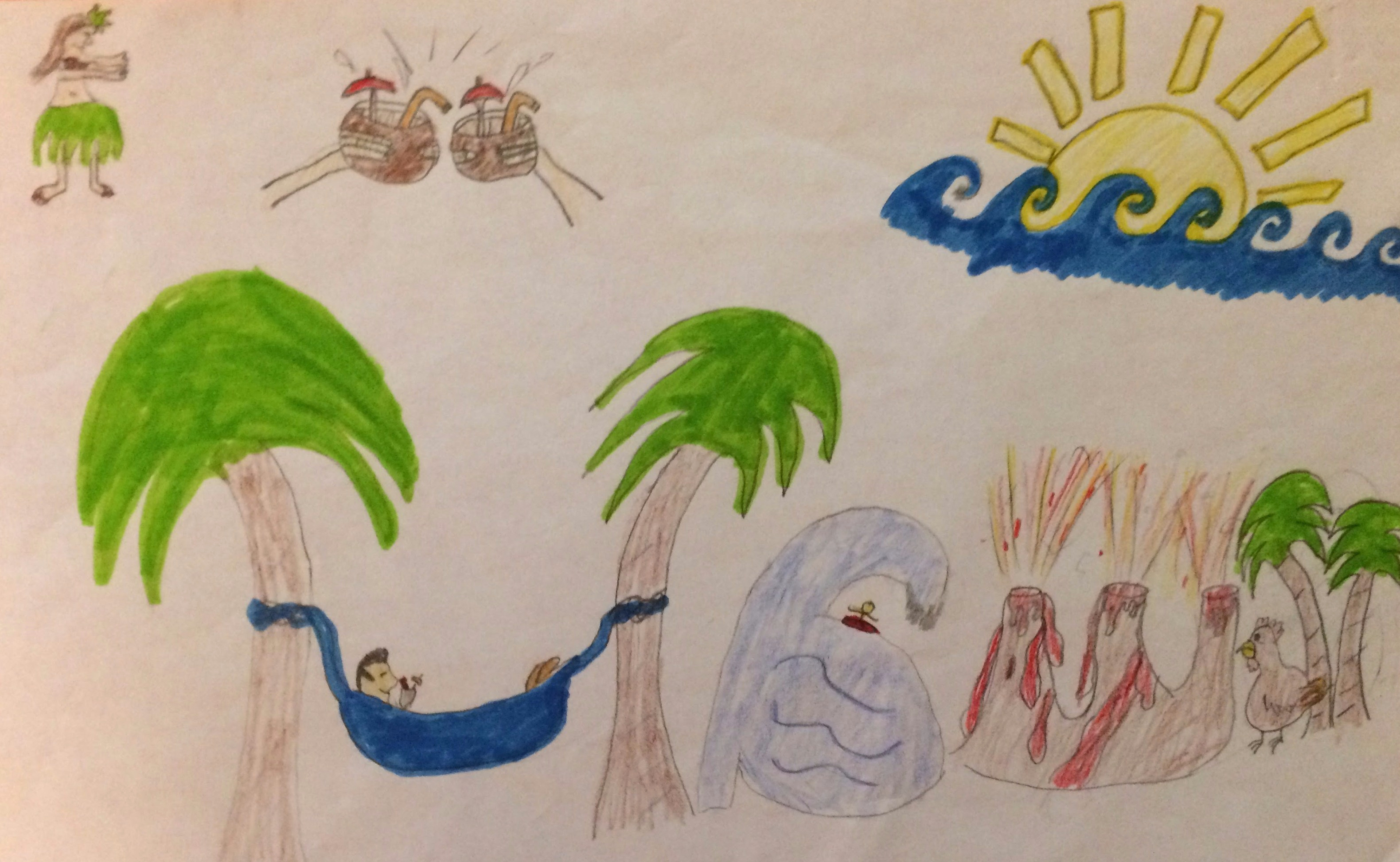
Before I taught this word activity with my students, I shared the idea with my husband. He had his doubts about the whole thing, big doubts. He was certain that middle school kids, I taught 6th grade at the time, wouldn’t be very enthused about a favorite word list and probably wouldn’t even come up with ten words. They would be too cool, and didn’t I know that not everyone was a big word nerd like I was?
I was determined to prove him wrong, so when I introduced the lesson of the favorite word list to my class I immediately made the challenge for the students not to have to come up with ten favorite words, but to be able to narrow down all of their favorite words to a list of only ten. How, I asked, would they be able to write down only ten favorite words, when they all had at least twenty or fifty favorite words? They could only write a list of ten favorite words, not fifteen, and not even eleven. Although some students gave me a strange look when I told them this, instead of complaining that they didn’t have even ten favorite words, I heard a few groans about only getting to write down ten. Some students have tried to bargain with me for eleven or twelve words, but nobody in my classes, in all the years I’ve taught this lesson has ever complained that they couldn’t think of at least ten!
Top Ten Favorite Word List (Click here for a simple favorite word list to use with students.)
My Top Ten Favorite Words (Right Now!)
Students in middle school, or maybe any grade for that matter, do need a few thoughts before starting their lists. I always tell them to keep the words appropriate so that everyone can enjoy the lists in the hallway. I make sure to tell them that I always put all of the lists up in the hallway. Then I also encourage them to stick to words that they know the meaning. I once had a sixth grade boy put the word tampon on his list because he heard his sisters and mom talking about them at home. I asked him politely, and in private, if he knew what the word meant. He said of course, and asked if I knew what it meant? I assured him that I did. The next day during lunch, he came in head down, and bright red to apologize. Turns out, he didn’t know what the word meant, and when his mom explained it to him, he was mortified. Luckily, he had not shared the word with the class, and it was easy to change his list before it was up for the public to view. The story always makes me smile because it does show the power of words. His older sisters had used the word in such secretive manner, that it became full of intrigue and mystery to him. This intrigue was only amplified when they, of course, wouldn’t tell their little brother what it meant. Sharing a story similar to this will preempt inappropriate words, both unintentional and intentional, from showing up on students’ lists.
Once the students write their lists, I share mine, and I encourage them to share theirs with the class. Students are very enthusiastic about sharing their lists so I always save a good 15 to 20 minutes for this, and when time is short have to limit the share to their top two favorite words. Sharing usually causes other students to want to change or add words to their own lists, and inspires those with incomplete lists to fill theirs in. Then the students pick one word on their list that they will illustrate and color and bring to life on paper. What the students come up with always blows me away. Every year, I’m surprised with their creativity and artistic talents.
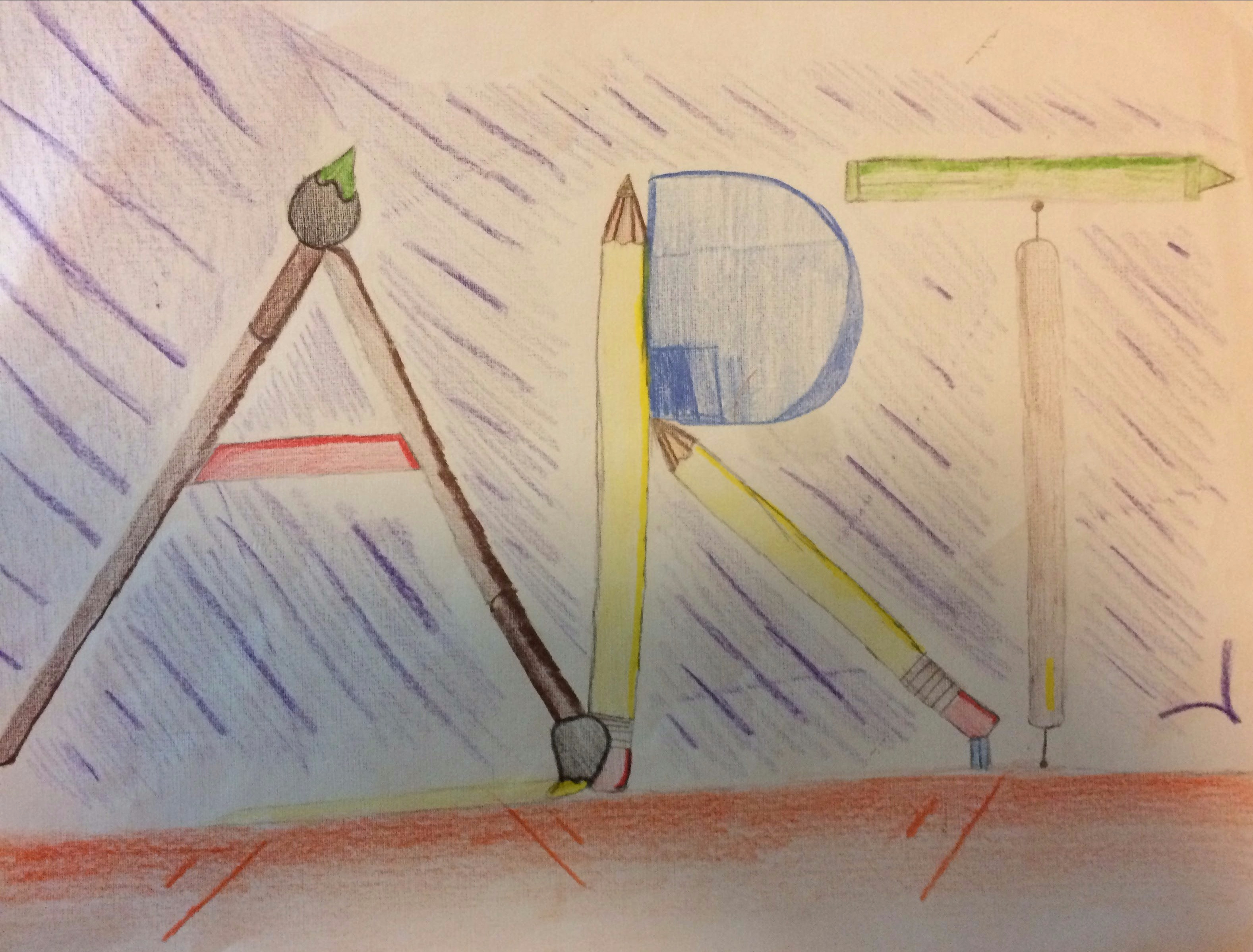
If you teach poetry, and want students to try out a fun lesson that focuses on word choice, give this lesson a shot. It is one of my favorite lessons to teach each year, and it always launches interesting and exciting discussions about words. You might be surprised to find you have a classroom full of logophiles too.
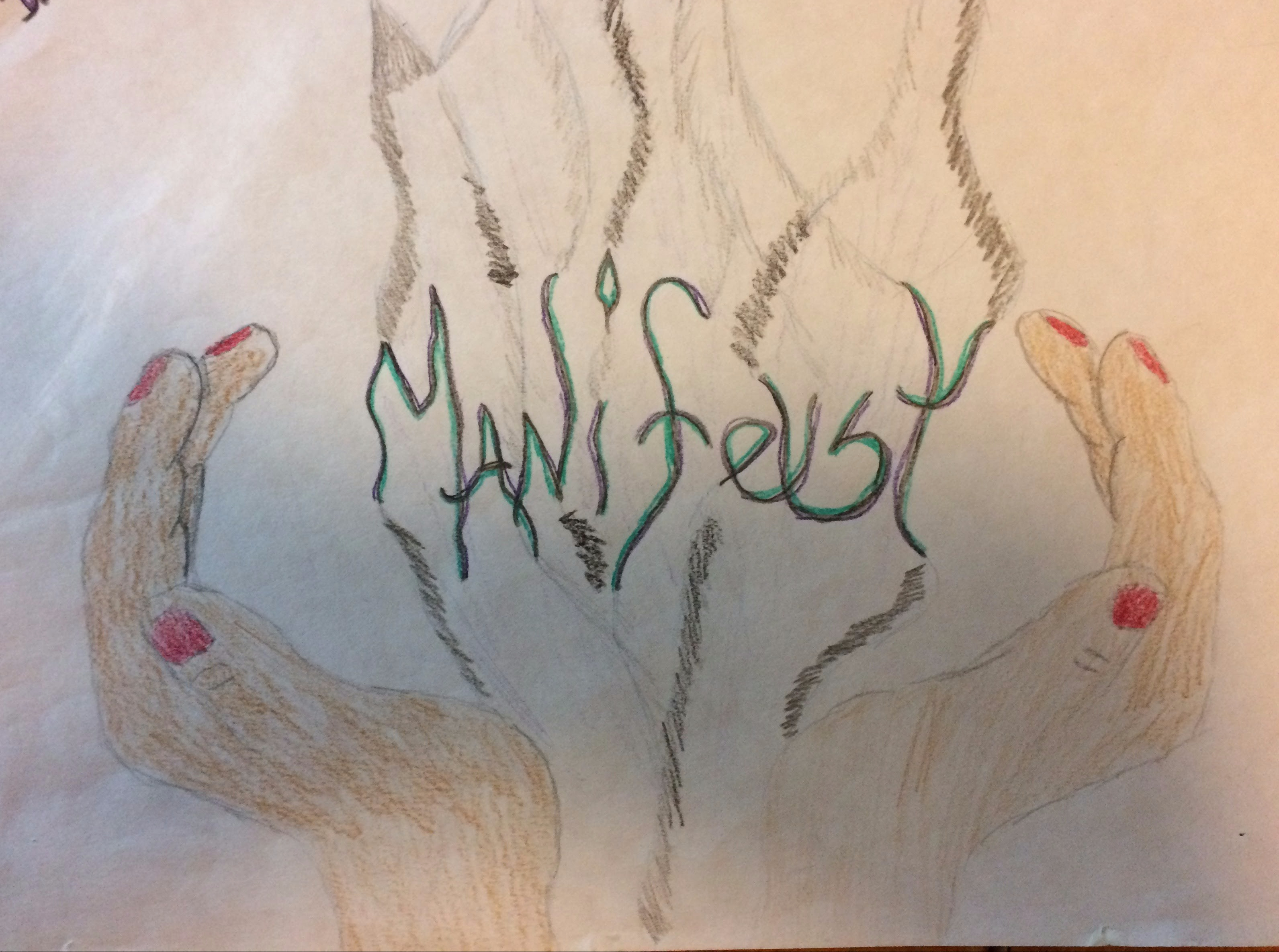
Student example of favorite word brought to life.




